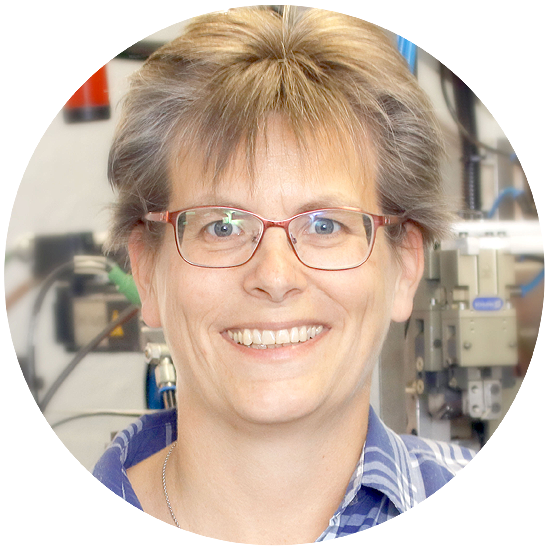Do you need a quotation or advice about our processes and services?
Our technical project manager Caroline Deutschmann, is happy to answer any of your questions.
Contact her directly at +49 (0)2352 9781 0.

VIBRATORY GRINDING
VIBRATORY GRINDING
Seltertech offers vibratory finishing as a surface treatment using trough and rotary vibrators. After many years of experience and working closely with the leading suppliers of equipment, abrasives and compounds, we know how to successfully complete your projects in this area. Speak with us about your cost-effective products and solutions.
Seltertech can apply vibratory grinding techniques on work pieces with dimensions of up to 400 mm in length and 2 to 25 mm in diameter. Discuss the details of your order with us.
ESSENTIALS OF VIBRATORY GRINDING
PROCEDURES
Vibratory finishing is a mechanical-chemical process for treating various types of surface materials. The work pieces are placed in a tank with grinding tools called chips. They are then processed in a vibratory or centrifugal motion.
Due to the special geometric shape of the grinding bodies and the side by side sliding motion of the work pieces, your desired effects are achievable on the surfaces or edges of the work pieces. The results after the grinding process, are flushed through the working tank with water. The process is further enhanced by a chemical additive known as a compound that causes the parts to bcecome clean and shiny in appearance. It also creates an anti-rust surface depending on the material and the type of compound.
This vibratory finishing process may serve various purposes. It is used to deburr, grind, polish, round, clean, coat and remove paint. The machine, the abrasives and the compound to be used, are selected according to the desired results and are often tested in laboratories. The purpose of vibratory grinding is to eliminate surface defects and create certain surface features rather than improve the shapes and dimensions of the work pieces.
The vibratory grinding process is applicable on tiny to large work pieces and on simple to complicated geometries – depending on the customized needs of the customer.
Various types of machines are commercially available within the market. Our machinery at seltertech, includes several types of trough vibrators and rotary vibrators.
Round or trough vibrators
Rotary vibrators is a universal tool for grinding a multitude of work pieces according to objectives. Its versatility ranges from aggressively deburring or rounding edges to high-gloss polishing of highly sensitive work pieces, in order to produce galvanized finishes. It taps into the highest levels of productivity and profitability as an inexpensive “stand alone” machine that is integrated into automated production processes.
TECHNICAL PARAMETER
GRINDING RESOURCES
Vibratory finishing is not only suited for surface finishing work pieces, it also offers a wide array of possibilities when it comes to specific modification and refinement of surfaces. Through the right combination of machines, grinding bodies and treatment agents, we attain the most radiant results from grinding processes.
Grinding bodies
A sophisticated range of grinding and polishing abrasives are available in the industry. These differ in their materials, sizes, geometric shapes and abrasiveness. Whether for rough grinding or to achieve galvanic-finished surfaces, we always offer high industrial quality grinding solutions.
Treatment agent (compound)
Treatment agents are used to enhance the grinding power of the process and to clean and preserve the work pieces. They also keep the grinding tools clean and effective. Therefore, the appropriate treatment agent is very important to attain the best grinding results.
ADVANTAGES OF VIBRATORY GRINDING
The versatile application of vibratory grinding includes deburring, edge rounding, grinding, smoothing, polishing, degreasing, descaling, matting and compacting.
Using the vibratory finishing method on any kind of components has greater advantages over manual processing:
- longer durability, thereby reducing downtime;
- smoother surfaces or edges on the work piece, therefore no rework required.
It creates gorgeous and unique surface finishes; short processing times; simultaneous processing of many components and thus low unit costs.
GUSTAV SELTER GmbH & Co. KG
Hauptstraße 2 – 6
58762 Altena
Germany
© COPYRIGHT 2016-2023 GUSTAV SELTER GMBH & CO. KG


